#polish filmmaking
Text


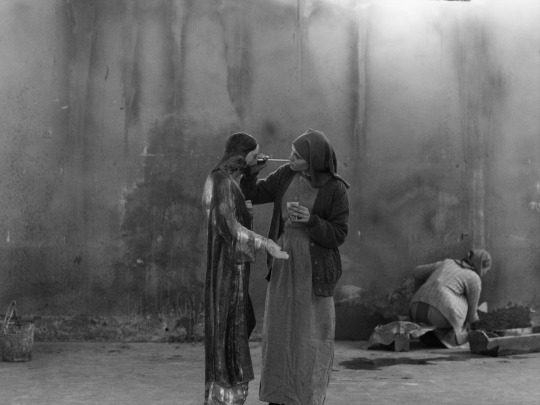


Ida (2013)
Director: Paweł Pawlikowski
Cinematography: Łukasz Żal, Ryszard Lenczewski
#Ida#agata kulesza#agata trzebuchowska#film photography#art#movie#film#beautiful photography#filmmaking#cult film#classic film#poland#polska#polish culture#polish film#polish movies#polish cinema#polonia#cine polaco#pelicula polaca#art history#artists on tumblr#pawel pawlikowski#post war#post war movie#2013#aesthetic#tumblr#black and white#blackandwhite
19 notes
·
View notes
Text
icon

3 notes
·
View notes
Text
that video of ppl from new thor movie making for of cgi isn't funny bc marvel works cgi people to the bone, they have short deadlines and licherally don't deserve the treatment they get. marvel found a loophole since vfx folks don't have an union!!!
#in poland movie higher ups get away with ponzi schemes and not paying the crew bc there are no unions#polish filmmaker association is full of old farts and fake woke people in their 30s who have no idea how activism works
1 note
·
View note
Text
SEKS W CZASACH WOJNY || live in Warsaw 03.06.23
youtube
video by nervkodama
#video#filmmaking#diy#punk#punk rock#post hardcore#alternative#post punk#polish#warsaw#live#live show#concert#music#Youtube
0 notes
Text
Indie horror filmmaker Eddie Munson, high off his first big (underground but notable) success, knows the movers and shakers of the film world have their eyes on him.
They're just waiting to see if he was a one hit wonder before they open all the doors he's been trying to kick down.
His next upcoming film is his chance, his shot at finally making it. Of being like Rob Zombie and the other creators he looks up to that masterfully blended metal and horror.
This is his golden ticket.
The project starts off smooth. His last success has greased the wheels, and things fall into place faster than ever before.
He's got the best idea for this insane haunted house story, a true "mazes in mazes" type of deal with a queer twist. A real look at how a place can haunt a person just as easily as a ghost can.
Everything's going swimmingly--until one of his leads drops out the day they're due to start shooting.
No call no show's, and later, Eddie will find out the guy got a last second call back to be a contestant on one of those Love Island bullshit romance gigs (and laugh his ass off when the main love interest takes one look at Billy Hargrove and goes on a five minute rant about ugly mullets on national television) but right now?
He's fucked.
He's called in every favor he has for this film. Maxed out every credit card he owns, tapped every contact, got on his hands and knees and begged his rising star journalist best bud to help him market it. (Which Nancy agreed too, for way less cash than she should have.)
Eddie can't get anyone on the phone, much less find a replacement actor and the amazing place they rented, that is so dark and wonderfully eerie, is booked out the rest of the year as an AirBnB.
If he doesn't film now, he loses it all.
Cue the other lead, unknown theater actor Steve Harrington, watching his hair pulling, tire kicking, 'cursing and hopping while holding a toe' mental breakdown and asks why Eddie himself doesn't act in it.
"Just go full Kevin Smith man. Act and direct." He says, with an easy grin.
Jeff, Eddie's tried and true videographer, trades glances with Gareth and Grant (Eddie's long used special effects and makeup team, who double for about twelve other jobs because they're also his best friends and they're all in this together, make or break.)
"We don't really have a lot of other options." Gareth hedges. "You're already using me and Grant as background characters."
Eddie, hands fluttering around his face as though trying to wave away this entire situation, squeezes his eyes shut and lets out a pained hiss.
"Fine, fine!" He announces with the air of a man running towards a fire. "Fuck it, this is our one shot and so help me I will be shooting it!"
Steve politely hides a laugh with a cough.
"Chuckle all you want big boy, I'm going to tragically romance you so hard people will forget both of our characters actually live." Eddie snarls.
Steve, the handsome bastard, just winks. "Looking forward to it."
Eddie blushes, but hides it with a surge of frantic energy, conveyed by lots of yelling and moving and getting the ball rolling.
Two days later, Steve would give the performance of a lifetime down on his knees, covered in a literal pound of fake gore, booty shorts and nothing else as he sobbed about how a lover could become a home. His hands clawed at Eddie's jeans before resting a tear stained face on a slim leg as he bent his body towards Eddie like it hurt to be away from him.
Eddie would later receive equal praise in his own acting during the scene, with the world and every reporter in it asking how he conveyed an otherworldly panic so beautifully throughout Steve's performance. What was he thinking, to evoke those expressions on his face?
The way his own pale hand, unmarred by blood and acting as a metaphor for the plot, would come to stroke Steve's cheeks.
Eventually he'd come up with a smooth polished answer that cheekily pleased his audience, but nothing would ever come close to the truth.
("Eddie I've known you since grade school." Jeff said that night, a scant few hours after they'd wrapped. "You can act man, but not like that."
Eddie made a wild "shut up" gesture, looking frantically over his shoulder before admitting; "You saw how close his face was to the prince of darkness!? I was seconds away from popping a boner next to his lips, in front of the 4K camera!”
Eddie bounced into Jeff’s face so he could hiss: “He fucking had his chin on my thigh, Jeff, and I am only a man. A mere mortal!"
"So we're gonna unpack all of that later." Jeff said finally, when he'd managed to get his mouth working and Eddie back out of his personal space. "But dude, we've talked about you calling your dick the prince of darkness."
Eddie flipped him off.)
One year later and critics named Corroded the best horror film of the year, praising the camera work, practical effects, and how there wasn't a soul alive who was surprised to hear Eddie and Steve were dating after their explosive on screen chemistry.
No one ever quite understood the prince of darkness jokes or why Steve mentioning it made Eddie blush, but that was a secret to find out later.
Today on WIP’s I have no intention of writing, indie horror movie AU!
#at some point this became a warmup for the warmup#and it feels very silly#LOL#steddie#Steve harrington#Eddie munson#horror movie AU#no upside down#eddie would have the STUPIDEST names for his dick#I will die on that hill#that is a man who has put googly eyes on his third leg#and then cried because they wouldn't come off#its why he loves steve bc steve would talk to it like a beloved pet#daddy misssess youuuu#corroded coffin as a unit hates them so much when they do this shit its the bane of their existance
3K notes
·
View notes
Text
Andrei Tarkovsky is like thee filmmaker for me...... literally not a single bad track😔
#ooc: sharks are smooth in all directions#not even talking about how Objectively Good he was as a filmmaker or worse. as a person#just like. every single frame every single scene it HITS#the way he saw the world nobody else saw it like that for me idk how to explain it#however 70-80s polish cinema is a close second#definitely has to do with the world i grew up in and my cultural environment im aware of that
1 note
·
View note
Text
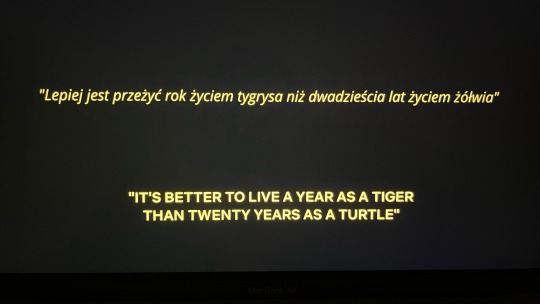
“It’s better to live a year as a tiger than twenty years as a turtle”
-How I Fell in Love with a Gangster (2022)
1 note
·
View note
Photo
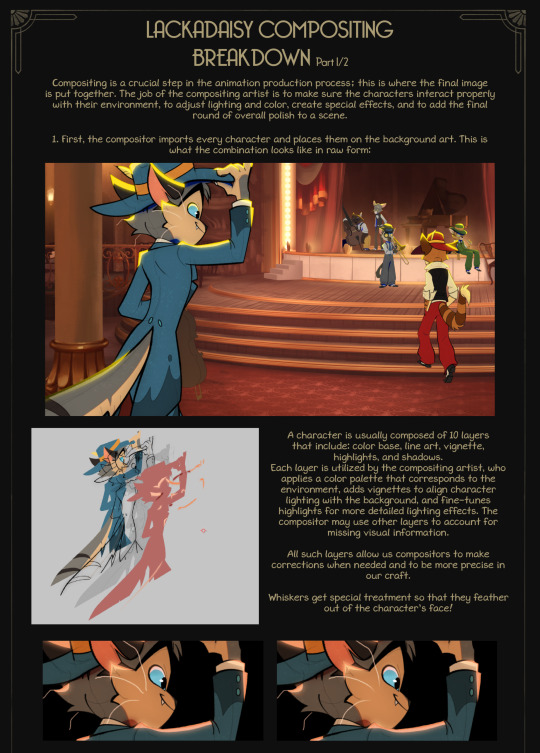


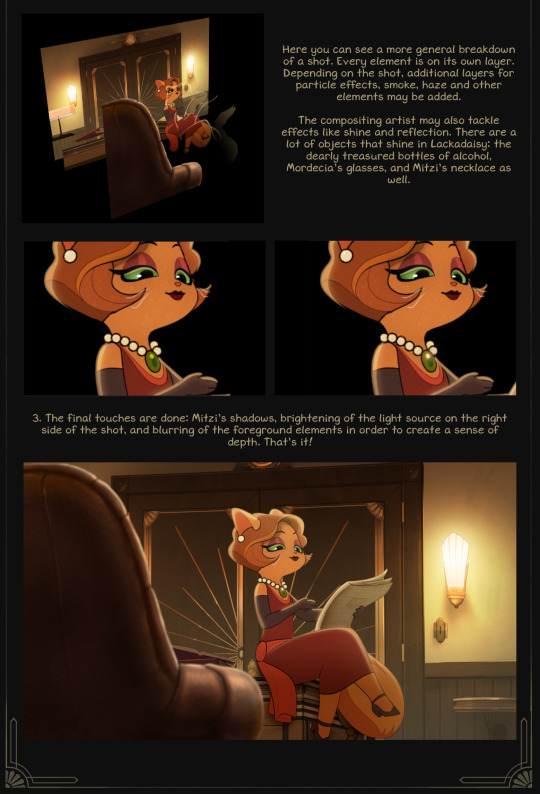
Lackadaisy Compositing Breakdown
Crew artist Marie “Eseralie” Leininger put this explainer together to demonstrate some of what the job of a compositor is on a project like Lackadaisy.
‘Comp’ is one of those not-often discussed parts of the filmmaking process, particularly in animated media, where most of the focus tends to be on the animation itself. Because it’s really the part where all of the pieces come together and receive a final round of polish, though, it’s no less vital. Hopefully this provides some insight into what’s involved!
See the animated Lackadaisy pilot here!
3K notes
·
View notes
Text
ALRIGHT YALL
I’m here to spread patriotic propaganda, bc fuck this country if it’s not about culture and art.
AND IT IS ABOUT BOTH SO I AM WAVING WHITE AND RED FLAG.
Anyway.
There is this movie, The Peasants (Chłopi) directed by DK Welchman an Hugh Welchman. It is animated drama based on polish Nobel prize winning novel by Władysław Reymont. It tells a story about a cycle of life in polish countryside at the end of XIX century. AND I KNOW IT MAY SOUND BORING BUT—




It was animated to look as if it was painted. Many talented artist worked to make oil paintings that became key moments for animators to put together. This technique is inspired by Józef Chełmoński (polish painter) and some of his works can be seen in this movie as scenes. Below Babie Lato and Bociany.


You may be familiar with this technique of filmmaking from Loving Vincent (2017) which is a story about Vincent van Gogh’s life portrayed in his style of painting.


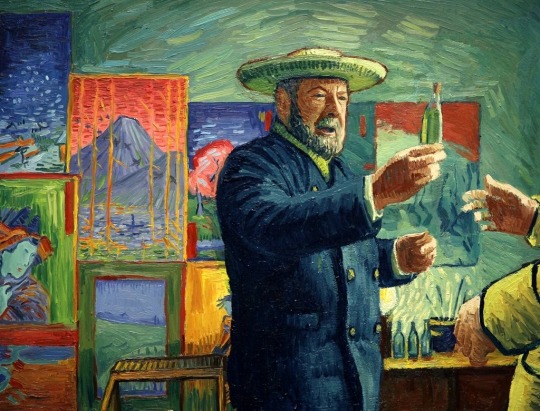
SO WHY AM I DOING THIS? Purely to maybe interest u all in checking out The Peasants.
I’m leaving you links to the trailer, PLEASE I BEG U CHECK IT OUT IT’S SO COOL!!!
youtube
Last thing i am leaving is spotify link to the song from soundtrack.
Thank u and have a great day bye!
#chłopi 2023#the peasants#the peasants movie#władysław reymont#polish movie#animation#be a person of culture watch the peasants#it’s a good book#i beg you to check it out
292 notes
·
View notes
Text
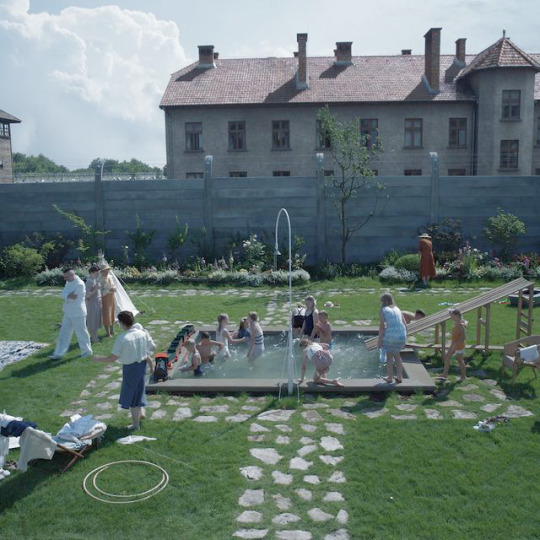
The villa of Commandant Höss: a "paradise" which shared a wall with Auschwitz.
ARCHITECTURE OF GENOCIDE: THE ZONE OF INTEREST (2023)
Before I saw this film, I'd assumed that it would illustrate the way architecture can be used to facilitate denial or self-deception. Like PARASITE (2019), in which one - in that case wholly fictional - family creates a lavish domestic retreat from which they can't see the overcrowding, poverty and suffering that surrounds them. But although Hedwig Höss speaks of planting vines to cover the wall they share with Auschwitz, there's no pretending this neighbour isn't there. The Höss's live in a pristine 1937 villa, with a manicured garden where they have parties and their children swim in a pool, and this juxtaposition is chilling. But they can still see the chimneys, and hear the screams, and nobody is denying what's next door.
This is one of the most horrifying movies I've seen, and that's due to the banality of the domestic scenes. We aren't watching a stereotypically deranged mass murderer, or even a psychopathic commandant at work inside the camp. Instead we see a comfortable house, a beautiful garden, two parents who love one another and their children. And who've somehow been able to assimilate the fact that millions are being murdered behind their garden wall.
The film is based loosely on a novel, but also on research into the lives of the real Höss's. A replica was built of their villa and garden, only metres from where the real home still stands. It's suggested that the real Rudolf and Hedwig considered themselves homesteaders, reclaiming rural territory for the 'master race', as was the Nazi ideal. In the film, Hedwig repeatedly emphasises the role of building and grounds as a status symbol. Their villa had been taken from its Polish owners and architecturally altered to fit the Höss's image. Most of the items inside would have been plundered from Jewish homes, and others, such as stools, and the wheelbarrow full of smaller seized items, would have been custom-made by prisoners. This isnt a home that is genteel in spite of the camp next door. On the contrary, everything about it, down to the fur coat on Hedwig's back, exists as a result of persecution and genocide.
The Zone was an exclusion area of over 40 sq. km around the camp, created after Poles and Jews were expelled from nearby villages. It's jarring how idyllic it appears in the film, with meadows, birdsong, a gently babbling river. While obviously not as horrifying as human apathy, the indifference of a place to the evil it houses is disconcerting, especially if you're in a profession like architecture or urban design, where places are thought to be somehow expressive of what occurs within them. We do see the horror occasionally seep beyond camp walls - a practiced scramble to leave sun loungers as crematoria smoke seeps into the garden, a wash of ash infiltrating the picturesque river.
It's likely that the filmmakers were using the extreme example of this family to remind us of our own ability to become apathetic and desensitised to the suffering of strangers, particularly when we feel our personal safety and comfort may be threatened. (Current campaigns to essentially criminalise poverty in the form of homelessness in certain cities, come to mind). Obviously the murder of millions is an evil on a completely different scale, and I have to believe that 99% of us wouldnt be capable of the Höss's actions, but it's a chilling and worthwhile reminder nonetheless.
62 notes
·
View notes
Text
A Time Called You: A Great Reminder to Go Watch Someday or One Day

This past weekend Netflix dropped a new kdrama called A Time Called You in its entirety, and I became particularly interested in watching it as soon as I realized what it was: the Korean remake of Someday or One Day I knew had been in the works for awhile. If you’re not familiar, Someday or One Day (SOOD) is a beloved 2019 Taiwanese drama that is widely considered to be among the best dramas the country has ever produced (there is also a 2022 film version of the story, but that’s less relevant to this post). Now, I love Korean dramas, and I know that countries remaking each other’s best shit is very common in the Asian media landscape, but I couldn’t help but feel protective of the original work and a bit resentful of the choice to adapt something that was so original and unique and specific and put that generic kdrama sheen on it. Taiwan has a small film industry, and this is one of its jewels. We didn’t need Korea’s take on it.
And having watched the adaptation in full now, I am feeling pretty justified in that initial feeling. Let me just say upfront: A Time Called You (ATCY) is a perfectly good drama with a solid cast and competent storytelling. Had I seen it absent the knowledge of what it was adapting, I probably would have liked it a lot. But I have already seen and loved Someday or One Day, so I feel compelled to break down why it is the better version of this tale, both for my fellow SOOD devotees who are wondering how this adaptation stacks up and for folks who have only seen the kdrama in the hopes that you’ll decide to watch the original. As usual, I did the most, so reader be advised that this is long (tagging @troubled-mind as promised and @smittenskitten because I saw you were looking for a comparison of the two dramas). TL; DR: if you liked ATCY, or have seen neither version and are wondering which to watch: go find Someday or One Day, because it’s an overall superior and more satisfying execution of the same story.
The Vibe
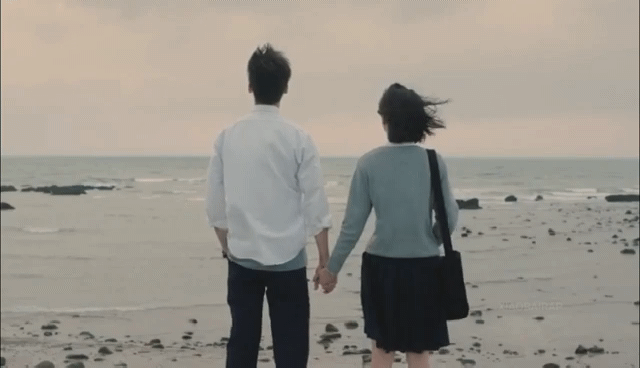
Let’s start here because it’s the most obvious and immediately striking thing as someone who has seen both versions. SOOD has a bit of a rough and unpolished feel, which makes it feel more grounded in reality (important when you are getting into fantasy elements like time travel but you still want the characters to feel like real people). We open our story in 1998 in a record shop with a young girl playing Last Dance by Wu Bai and China Blue, a 1996 mando pop rock ballad, and thus setting the tone—this will be a somewhat raw and bittersweet story about grief and hurt and longing that will invite us to wallow in our feelings. And that melancholic vibe stays throughout the drama, even in the explicitly happy scenes, because you are always aware that the joy you are seeing has already been lost.
By contrast, ATCY feels… emotionally flat. Don’t get me wrong, it is a very faithful adaptation. The early episodes are practically a shot for shot remake of the original drama. But it’s too polished, too shiny. The filmmaking is bog standard kdrama fare; everything is soft focus and warmly lit and too beautiful and consequently nothing feels real. It feels right in line with the standard aesthetics of recent mainstream Korean dramas, and that choice undermines the emotional weight and grit of this story.
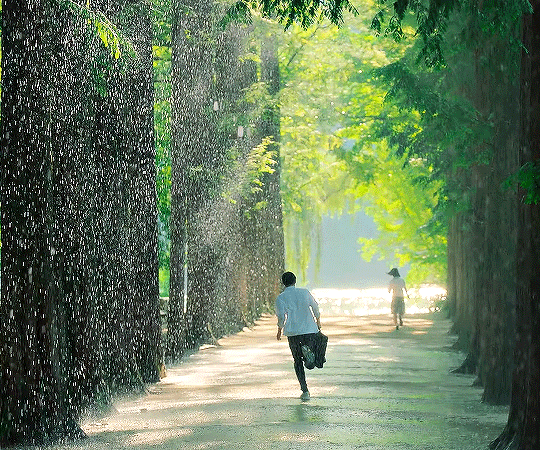
A great example of this can be seen in the way the two dramas handle the iconic scene where our female lead runs in the rain, looking back over her shoulder to smile in delight at the male lead before continuing on her way. This is a moment of realization for him about his feelings for her—one he will later immortalize in a painting that becomes part of the mystery of the past she is trying to unravel. In Someday or One Day, this scene takes place on a regular street, in the utterly mundane surroundings of their everyday lives as they walk home, and she runs down the middle of the road as puddles gather in the uneven pavement; in A Time Called Love, they are in a picturesque park for this scene, surrounded by green and encased within a grove of giant trees, and she runs right down the middle of a tree lane that looks like it came straight out of a fairytale. One story is very much about a love grounded in a reality we can recognize; the other is pure fantasy romance.
The Music
I already mentioned the song that anchors the Taiwanese drama above. Last Dance is hugely important to the story, both thematically and as a plot device, and in its ability to set the mood and tone of the drama.
youtube
The Korean remake similarly uses a real 1996 ballad as its main song and time travel mechanism: With My Tears by Seo Ji Won. And, uh, the vibe is a bit different.
youtube
Discerning listeners might recognize this as one of the many classic love ballads performed by our favorite doctors by day, rock stars by night over on Hospital Playlist. It’s a perfectly fine song. But it sets quite a different tone for our story, doesn’t it? It also is meant to be a song that a teenage boy is hankering to listen to on cassette, and listen, I wasn’t living in Korea in 1996. I have no idea how culturally accurate that may be. I’m sure there were in fact baby Lee Ik Juns running around trying to get their hands on this cheesy love song. But the edgier sound of Last Dance definitely sounds more in line with something the teenage male lead would listen to and what the music is meant to convey. And frankly, since we hear this song about 30 times in the drama, it matters that Last Dance is just an objectively better song.
And that’s just the tip of the iceberg, because beyond the classic song each version chose to use as its centerpiece, there is also a stark difference in the quality and tone of each drama’s OSTs. Here is a compilation of the Someday or One Day tracks, including the utterly gorgeous main theme by Shi Shi. The music is hugely important in the Taiwanese drama and is used to set the mood as well as emphasize its themes, and the tracks feel specific to this story.
youtube
And here is a compilation of A Time Called You OSTs.
youtube
If you’re familiar with kdrama OSTs, you will recognize most of the artists on here, as well as some new covers of old songs. And again, the vibes are quite different. Whereas SOOD was very intentional and specific in its music choices, ATCY just sounds like every other kdrama. There is nothing on this tracklist that stands out or evokes the kind of feeling that the SOOD tracks do.
The Main Couple
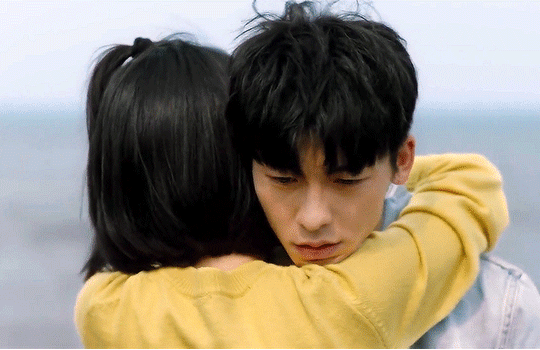
The name and timeline situation in this show makes this section unnecessarily difficult, so let me just make a little reference sheet here:
Someday or One Day
Alice Ke plays Yu Xuan (2019) and Yun Ru (1998)
Greg Hsu plays Quan Sheng (2019) and Zi Wei (1998)
A Time Called You
Jeon Yeo Been plays Jun Hee (2023) and Min Yu (1998)
Ahn Hyo Seop plays Yeun Jun (2023) and Si Heon (1998)
All of the actors here are seasoned and very good at their jobs, so I am not casting shade on any of them—they are executing their performances based on writing and directorial choices. But I cannot deny that the Taiwanese version of these characters are more compelling all around. In SOOD, the main characters have a real spark; despite the melancholic undertone of the story, there are moments of genuine joy and when they connect with each other, you feel why this bond is strong enough for them to find each other through time and despite all the trauma they endure. In ATCY, however, the characterizations are muted.
This is most evident in the difference between Quan Sheng/Zi Wei and Yeon Jun/Si Heon. Greg Hsu plays Zi Wei as magnetic, playful, mischievous, utterly lovable, and very intense about his feelings for his lady. He has a real joie de vivre about him that clearly brightens up Yu Xuan’s life considerably, and his devotion to her is not just shown, but deeply felt. Experiencing their memories, you understand immediately why Yu Xuan can’t move on from his death; he was the joyful, relaxed counterpoint to her more ambitious and serious personality. Si Heon, though? He is a nice dude and a generous partner and he is very good looking. But he doesn’t have the playfulness or the intensity that his Taiwanese counterpart does. His personality is just more moderate all around. One great example of this: upon discovering that he has traveled forward into the body of the person that would become Yu Xuan/Jun Hee’s boyfriend, Zi Wei (in Quan Sheng’s body now, are you still with me?) actively decides to find her, love her, and try to solve this time loop quagmire they are in; Si Heon (in Yeon Jun’s body) waits for a moment of fate to give him a sign, and only makes the decision to pursue Jun Hee after running into her by coincidence.
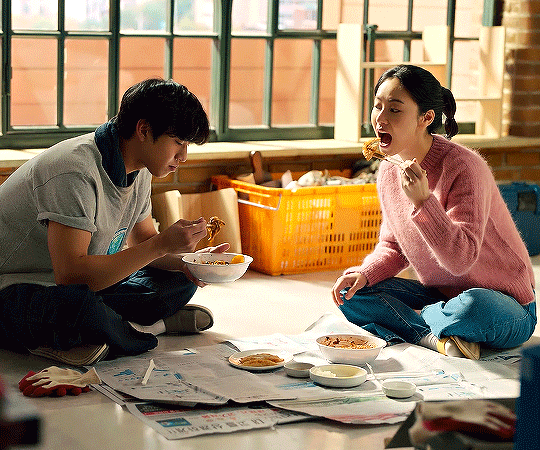
Similarly, Jun Hee is not quite as spunky and sassy as Yu Xuan and Min Yu is not as dark and awkward as Yun Ru; when Jun Hee travels to the past and takes up residence in Min Yu’s body, the differences between the two characters she is playing are not as evident. In SOOD, I could tell at a glance who is in Yun Ru’s body; in ATCY I need more context to be sure. Where Yun Ru had more of an edge, Min Yu simply reads very shy. It’s not as compelling. One scene that really stands out as an example of this: when Yun Ru is pretending to be Yu Xuan in 1998 and looks in the mirror to practice smiling, it looks downright creepy and sinister; when Min Yu is masquerading as Jun Hee and looks at herself in the mirror, she just looks awed and happy, if a bit awkward. It’s subtle, but it changes the way you feel about the characters.
The difference in Jun Hee and Yeon Jun’s characterization also affects the couple chemistry, which is just not nearly as strong in ATCY. The characters are more muted and thus the expected sparks are more like smoldering embers. The relationship feels cozy and warm and nurturing, but it doesn’t feel vital. It doesn’t feel like the kind of relationship you would fight through time or break the rules of the universe to return to. I recall gasping or crying or laughing out loud throughout SOOD because I was constantly taken aback by Greg Hsu’s arresting presence and the chemistry he and Alice Ke generated was just emotionally riveting. When Yu Xuan told Zi Wei (as Quan Sheng) that they were officially together, that man literally jumped for joy and shouted out his love for her; Si Heon (as Yeon Jun) reacts to the same moment with a quiet smile and a hug. When Zi Wei saw Yu Xuan in Yun Ru’s body again in the finale, he knew instantly that it was her and the smile overtook his face as he reached for her; Si Heon initially called Min Ju’s name before getting closer and taking several beats to realize it was Jun Hee (ruining this iconic moment is perhaps this remake’s greatest sin against romance, my god).
Everything between the couple in SOOD was just more, both in happiness and in despair. I liked Jun Hee and Si Heon, and Ahn Hyo Seop and Jeon Yeo Been are very competent actors whose performances I have loved in other dramas, but they didn’t achieve that level of chemistry here, the writing and directing choices worked against them, and I didn’t feel that same desperation for them to figure this out that I did with Yu Xuan and Zi Wei.
The Story
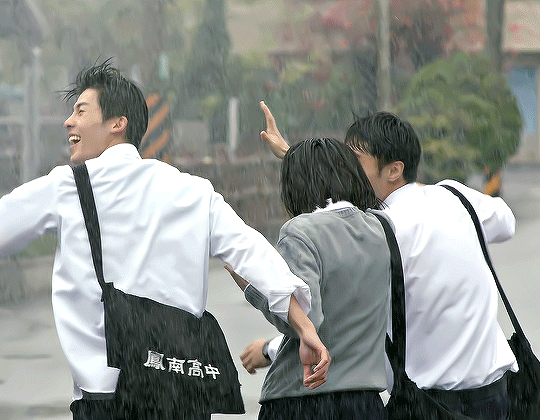
The Korean version is a very faithful adaptation overall (I haven’t mentioned Jun Jie and In Gyuk because his character and story is more consistent across the two shows), but does make some small tweaks to the story, some of which seem to be out of necessity due to a shorter run time (one episode and a couple hours total less than the Taiwanese original) and some just… because? The shorter amount of story time does lead to them having to cut corners on some aspects of the mythology and time travel lore, making it all a bit less clear for folks who don’t already understand what’s going on, and they put in a few nods to typical kdrama tropes like amusement park dates and hand of fate stuff that we really didn’t need—they are already trapped in a time loop together, we get it!
ATCY also messed with the timelines and ages for reasons I don’t really understand and that don’t really track. In SOOD, Zi Wei traveled forward from 2002 to Quan Sheng’s body in 2010, met Yu Xuan, and then died in 2018. In ATCY, Si Heon traveled forward from 2002 only to 2007 and did not die until 2022—but the relationship dynamics are all the same. It made sense for a young couple who had been together about 7 years and who were in their mid-20s to be having the kind of relationship problems they did—fighting about prioritizing careers and time abroad and whether it was time to get married. But a couple who has been together nearly 15 years? Who are in their mid-30s? They would have already been married probably and had a couple kids to boot. The choice to change the timeline like this had me scratching my head and accomplished nothing for the story.
But neither of those things are the change to the story that is weighing on me most. That occurs in a very small and brief backstory for the real Yeon Jun, where the drama introduces an original character who has no counterpart in SOOD: Tae Ha.

In SOOD, the real Quan Sheng is a closeted gay teenager who meets a tragic end: he confesses to his crush, gets brutally rejected, then gets bullied when the crush tells others about his sexuality, and ultimately decides to walk into the sea in an attempt to end his life, a choice that leaves his body in a coma until Zi Wei’s consciousness takes it over. In ATCY, this backstory changes and Rowoon is brought in for a brief but impactful cameo as Tae Ha, Yeon Jun’s cram school friend. We see that the two have mutual feelings for each other but are both struggling to confess. One day as they are driving together, they finally explicitly acknowledge their feelings, holding hands and smiling at one another—and then immediately get hit by a Truck of Doom (easily one of the most tired kdrama tropes), Tae Ha dying on impact and Yeon Jun ending up in a coma with Si Heon’s consciousness eventually taking over his body like in the original story.
Now on first glance, you might be inclined to give the show some credit for including a new gay character and giving the original Yeon Jun a happier experience with his crush. Explicit gay representation? In a mainstream kdrama? Still very rare and a big deal if done right. But if you think for a moment longer you’ll realize we can’t give the show credit for this, because this is a textbook execution of the Bury Your Gays trope and the narrative punishment that befalls gay characters who act on their attraction. Essentially, what the Korean remake did here was reveal these two characters are gay, killed them both immediately after they decided to pursue a relationship with each other, and then had the het male lead character take over the body of this gay man and use it to enter into a relationship with a woman. Some aspects of this plot were present in the original tale, but this choice to add an additional gay character only to kill him and tie it to their moment of acknowledging their mutual attraction? Made it significantly worse. It was badly done and I will not applaud the drama for representation when they did it in such a cruel way.
The Ending
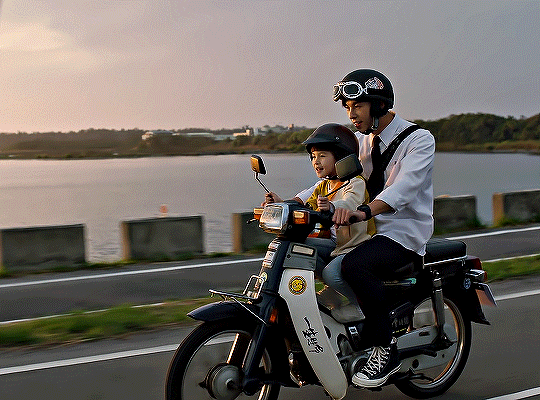
SOOD ends on a hopeful but somewhat ambiguous note, with Yu Xuan in 2020 finding a way to go back and save Yun Ru (and Jun Jie by extension) and then breaking the time loop, sacrificing her relationship with Zi Wei in the process even as it breaks her heart (because the only way for them to meet and fall in love in 2010 was to stay in the loop). She sacrifices their romance, and all their memories together, because it’s the right thing to do—she inadvertently destroyed Yun Ru’s life with her time traveling, and she couldn’t live with that knowing there was a way to fix it. We are left with a broken time loop, original teen Zi Wei meeting child Yu Xuan again in 1998, and the hope that they will find a way to make their fates align again and be together without time travel complications. It’s just the right bittersweet touch to end the story on; their previous relationship was lost and their sacrifice was real, but there is hope for another version of a happy life together, someday.
By contrast, ATCY goes for a more explicit happy ending: Jun Hee makes the same choice to go back and save Min Ju, and to break the time loop and sacrifice her relationship with Si Heon, but in ATCY we then jump forward to 2011 to a happy epilogue to see Si Heon and Jun Hee meet as adults. And look, I love a happy ending! But what I said above about the sacrifice Yu Xuan and Zi Wei made in SOOD really resonating because of its bittersweet ending? That’s absent here, because ATCY decided they needed to put a bow on it and reassure us they would get back together. ATCY was just never willing to let us stay in the grief or commit to the darker and sadder aspects of this story, and as a result, the whole thing loses some of its impact.
#someday or one day#a time called you#tw drama#kdrama#long post#why yes i did write a 3k word post for the ten people on this website who care about both these dramas#shan shouts into the void
146 notes
·
View notes
Photo
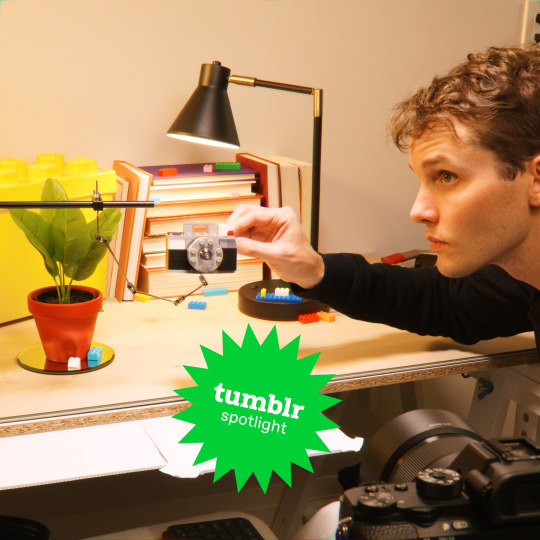
Creator Spotlight: @kevinbparry
Kevin Parry is a stop-motion animator and visual effects artist in Toronto, Canada, who creates magical and mind-bending content for brands. Prior to working in social media full-time, he animated a number of stop-motion feature films at Portland-based LAIKA.
Check out our interview with Kevin below!
How did you get your start in stop motion and animation in general?
I was always very interested in moviemaking (monster makeup and visual effects), and that led to me studying animation in college, where I specialized in stop-motion.
How has technology changed the way you approach your work?
The shift to shorter content through social media feeds has made me approach storytelling in a more concise way. When I first started my career, ‘short form’ meant a story maybe 4 minutes in length. Now, I make videos that are as short as 4 seconds!
Over the years as an animator, who/what were your biggest inspirations behind your creativity?
I’m a big fan of directors and artists who have a bit more texture to their work - blending old-school, handcrafted techniques with modern technology. Filmmakers like Michel Gondry and Wes Anderson. And, of course, magicians! The surprise and delight of magic is something I try to capture in my work.
If there is one thing you want your audience to remember about your work, what would it be?
That I left them feeling stumped and curious about how I made it! It’s the best feeling when someone tells me they watched my video a dozen times and still can’t figure it out.
As we’re wrapping up with the year, what is one thing you learnt about yourself as a creator in 2022? Any goals for 2023?
This year, I’ve been focusing on making my work less polished. Meaning ditching green screens and doing a lot more of my stop-motion and visual effects in camera. It’s a bit of a battle with the perfectionist in me, but I think my work can have a lot more charm to it if I embrace mistakes and the rougher edges.
How did you transition from working for a company to working freelance?
I was working on stop-motion animated feature films at LAIKA and then eventually left to pursue social media full-time. There were a few years of overlap where I built up an audience and had already started to get offers from companies before finally making the leap. I’m thankful for all the years spent doing studio work because it prepared me for the business side of freelance—stuff like pitching concepts and understanding when work needs to serve the client and not myself.
Do you have any tips for creators out there looking to make the same move?
My two tips are:
Be as unique as possible. You want to give companies a reason to come to you, and not someone else.
Find a balance in your work between Hollywood and homemade. You want it to be professional enough that companies trust you with their brand but approachable enough that it blends in well on social media.
Who on Tumblr inspires you and why?
To be honest, I’m new to Tumblr! I signed up a few weeks ago and have just begun to explore the fantastic content. If people can leave a comment with who I should check out, that would be fantastic!
Thank you for stopping by, Kevin! Be sure to check out more of their work over at @kevinbparry, and drop a comment below with who Kevin should check out on Tumblr!
522 notes
·
View notes
Text
My husband said people use this site to share movie gifs but so far I've mostly seen thirst posts and advertisements for something called Manscaped. Also, the layout is unintuitive so I can't tell if I'm supposed to be looking for content or if the content comes to me. I guess this is going to be my introduction post, then. Do people do that here? I don't know if anyone still introduces themselves on the internet since forums died out.
You may have heard of me from my movies. Probably not though because they're not very well-known and I'm not very good at them, and most of them haven't been released to the public yet. I'm a filmmaker living in LA with my husband who recently returned from several years at sea. I would go into more detail but my lunch is almost over.
I've been referred to as bold, ambitious, and out of touch with reality. My zodiac sign is Aries which means I'm passionate and motivated. I had a grilled cheese sandwich for lunch. My bartender friend with a psychology degree says I'm an INTP. I had a pet goldfish when I was seven but my dad left the soap in when he cleaned the tank one day and the fish died. I'm Palestinian and Polish. I may have a developmental disorder. Did I miss anything?
32 notes
·
View notes
Text
The Story of the Original "Tea" Dancer
There was a delightful story in the Times on February 4th about George Lee, on whom Balanchine created the Tea variation in The Nutcracker. Here it is.
From Ballet to Blackjack, a Dance Pioneer’s Amazing Odyssey
George Lee was the original Tea in “George Balanchine’s The Nutcracker.” A documentary filmmaker found him and a lost part of ballet history in Las Vegas.
By Siobhan Burke
Feb. 4, 2024
Among the blaring lights and all-hours amusements of downtown Las Vegas, in a sea of slot machines at the Four Queens Hotel and Casino, George Lee sits quietly at a blackjack table, dealing cards eight hours a day, five days a week, a job he’s been doing for more than 40 years.
Lee, 88, was likely in his usual spot when the filmmaker Jennifer Lin was sifting through old photos at the New York Public Library for the Performing Arts in 2022, wondering what had become of a dancer with a notable place in ballet history. Pictured in a publicity shot for the original production of “George Balanchine’s The Nutcracker,” in the role known as Tea, was a young Asian dancer identified as George Li.
For Lin, a veteran newspaper reporter turned documentarian, the picture raised intriguing questions. In 1954, when the photo was taken, it was rare to see dancers of color on the stage of New York City Ballet, the company Balanchine co-founded. Who was this young man, this breaker of racial barriers, this pioneer? Was he still alive? And if so, what was he up to? “I became absolutely obsessed with trying to find out what happened to George Li,” Lin said in a video interview.
In just over a year, that obsession has blossomed into a short film, “Ten Times Better,” that chronicles the unexpected story of Lee’s life: from his childhood in 1940s Shanghai, where his performing career began; to a refugee camp in the Philippines, where he fled with his mother, a Polish ballet dancer, in 1949; to New York City and the School of American Ballet, where Balanchine cast him in “The Nutcracker” to “Flower Drum Song” on Broadway, his first of many musical theater gigs; and ultimately, to Las Vegas, where he left dance for blackjack dealing in 1980. (He changed the spelling of his last name in 1959, when he became a United States citizen.)
The film will have its premiere on Feb. 10 as part of the Dance on Camera Festival at Film at Lincoln Center. Lee, who last visited New York in 1993, will be in town for the occasion, an opportunity for long-overdue recognition.
“So many years I haven’t done ballet,” Lee said over coffee at the Four Queens on a recent Sunday, after his shift. “And then suddenly Jennifer comes and tries to bring everything up. To me, it was like a shock.”

George Lee today. He has been a blackjack dealer in Las Vegas for more than 40 years. Photo: Saeed Rahbaran for The New York Times
But Lin’s interest has been welcome. “Jennifer is so perfect, she knows exactly everything,” he said. “She knows my background more than I do.”
Lin was not the only one who had been searching for Lee. In 2017, while organizing an exhibition on “The Nutcracker,” Arlene Yu, who worked for the New York Public Library at the time and is now Lincoln Center’s head archivist, was puzzled by the relatively few traces of him in the library’s vast dance collection.
“I think I’d tracked him down to 1961, but after that, it was really hard to find anything,” she said. “Whereas if you look at some of his peers in ‘The Nutcracker’ in 1954, they went on to careers where there was a lot more documentation.”
Lin’s fascination with Lee emerged through her work on another film, about Phil Chan and Georgina Pazcoguin, the founders of Final Bow for Yellowface, an initiative focused on ending offensive depictions of Asians in ballet. The role of Tea, a divertissement historically rife with such stereotypes—in Balanchine’s canonical version of “The Nutcracker” and others—has been a flashpoint in those efforts.
Chan, too, had been struck by the 1954 images of “The Nutcracker,” which he came across during a library fellowship in 2020.
“I’m like, wait, there’s actually a Chinese guy,” he said — as opposed to a non-Chinese dancer with the saffron makeup or heavily painted eyes or even the artificial buck teeth worn in some old productions. “Who is this guy? And why do I not know about him?”

The "Tea" variation in The Nutcracker at City Ballet in 2015. The dancers are Ralph Ippolito, Claire Von Enck, and Baily Jones. Photo: Andrea Mohin for The New York Times
Lee, in his heyday, was a dancer to know. At just 12, he was already winning public praise. In a preview of a recital of the King-Yanover School in Shanghai, the North China Daily News called him an “extremely promising young Chinese boy, whose technique is of a very high standard.” A reviewer wrote that he “already may be said to be the best Chinese interpreter of Western ballet.” (Lee saved these newspaper clippings and shared them with Lin when they eventually met.)
Born in Hong Kong in 1935, Lee moved to Shanghai with his mother in 1941, when Shanghai was under Japanese occupation. During World War II, his father, a Chinese acrobat, was in Kunming in western China; he died in an accident on his way to visit Lee in 1945.
Lee’s mother, Stanislawa Lee, who had danced with the Warsaw Opera, was his first ballet teacher; as a child, he would follow along with her daily barre exercises. Shanghai had a significant Russian population, and with that a robust ballet scene. To earn money, Stanislawa arranged for her son to perform in nightclubs—“like a polka dance, or Russian dance, or sailor dance,” Lee said. The clubs would pay them in rice.

Little George Li in his Shanghai days. Photo: George Lee private collection via the NY Times
Fearing the Chinese Communist Party’s takeover in 1949, the two evacuated to the Philippines. An expected four months as refugees turned into two years. In 1951, an American friend of Lee’s father sponsored them to come to New York, where he introduced Lee to the School of American Ballet, City Ballet’s affiliated school.
As Lee narrates these twists and turns in the film, one memory anchors his recollections. Before they immigrated, his mother issued a warning. “You are going to America, it’s all white people, and you better be 10 times better,” he recalls her saying. “Remember that: 10 times better!”
The footage of Lee in his 20s suggests he took that advice to heart. In television appearances — with the company of the ballet star André Eglevsky, and in a number from “Flower Drum Song” on the Ed Sullivan Show — his power and precision dazzle.
“He was good; he was really good,” Chan said. “Clean fifth, high jump, polished turns, stick the landing—the training is all there. He’s already 10 times better than everybody else.”
In a 1979 interview heard in the film, the former City Ballet soloist Richard Thomas, who took over the role of Tea, raves about Lee’s peerless acrobatic jumps: “He was wonderful! Balanchine choreographed a variation for him that none of us have ever been able to equal.”
As Lee remembers it, Balanchine spent 15 minutes with him in the studio. “He said, ‘What can you do good? Show me what you can do good,’ so I show him something,” Lee said. “I did things like splits and double turns, down and up, turn again like a ball, and that’s it. He picked up some things and put them together.”
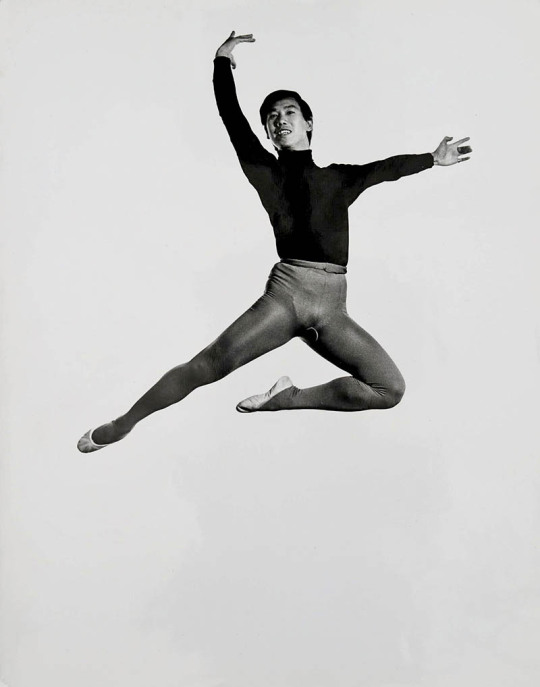
George Li as a student at the School of American Ballet. Photo: George Lee private collection via the NY Times
He recalled that during a “Nutcracker” dress rehearsal, the City Ballet makeup artist put him in full yellowface, and Balanchine insisted he take off the makeup. “He is Asian enough! Why do you make him more?” he remembers Balanchine saying. Lee was costumed in the Fu Manchu mustache, queue ponytail and rice paddy hat often associated with the role, now widely critiqued as racist caricatures. But he said he didn’t take offense. “Dancing is dancing,” he said.
Lee performed in “The Nutcracker” as a student; he was never invited to join City Ballet. But he clearly excelled in his classes and onstage. For that, he credits his strong foundation of Russian training in China — and his mother’s exacting standards. He can still see her standing in the studio doorway at the School of American Ballet, observing closely.
“She was watching the class and then would go home and tell me, ‘You did this wrong or that wrong, you got to do it this way,’” he said. “So I really worked hard, and I was good.” (His favorite teacher at the school was the demanding Anatole Oboukhoff: “He always wanted more, and that’s why I liked him very much.”)
To make a living Lee turned to musical theater, performing in shows like “Baker Street” on Broadway and the cabaret “Carol Channing with her 10 Stout-Hearted Men,” which opened in London. He pieced together jobs for more than 20 years, often unsure of what would come next.

Lee in flight in a production of “Flower Drum Song” in Las Vegas in the early 1960s. Photo: George Lee personal collection via the NY Times
He was dancing in a Vegas revue, “Alcazar de Paris,” now in his 40s, when a blackjack dealer friend suggested he go to dealer school. “I can’t dance all my life,” he remembers thinking. He decided to give dealing a try and soon landed a job at the Four Queens. Aside from four years at another casino, he has worked there ever since.
In December 2022, he got a voice mail message from Lin. With her reporting skills and some crucial assists from Yu, she had determined that he lived in Las Vegas. Of the five phone numbers she found for George Lees, four led nowhere; his was the last she tried.
When they finally connected, she put her other project on hold to focus on his story; she and her small creative team had a final cut by November. “George is 88, and I wanted him to be able to enjoy this moment, where people recognize him for his dancing,” she said.
As he prepares to return to New York, Lee said he felt gratified, most of all, for his mother.
“I’m proud for her that I didn’t let her down,” he said. “It makes me feel better to look up at her and say: ‘Look, mother, now you see what’s happening, what you did for me. You gave me all the good foundation, everything. Through you, I’m here now.’”

George Lee today. Photo: Saeed Rahbaran for The New York Times
#Balanchine#George Lee#George Li#Nutcracker ballet#Balanchine's Nutcracker#Asian stereotypes#Nutcracker Chinese Dance#New York City Ballet#NYCB#Ten Times Better#ballet film#Saeed Rahbaran#Andrea Mohin
20 notes
·
View notes
Text
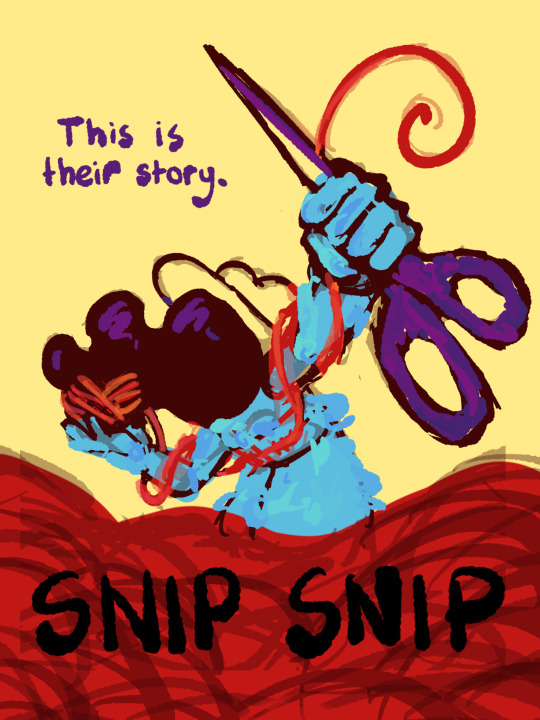

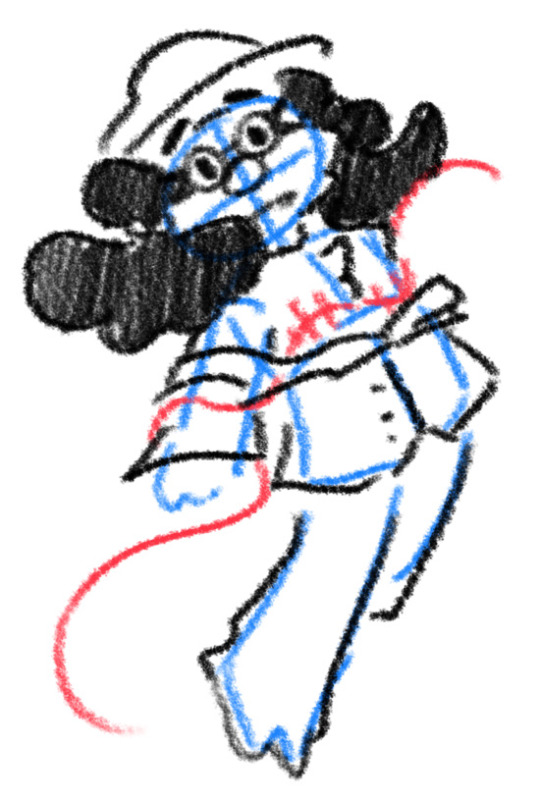
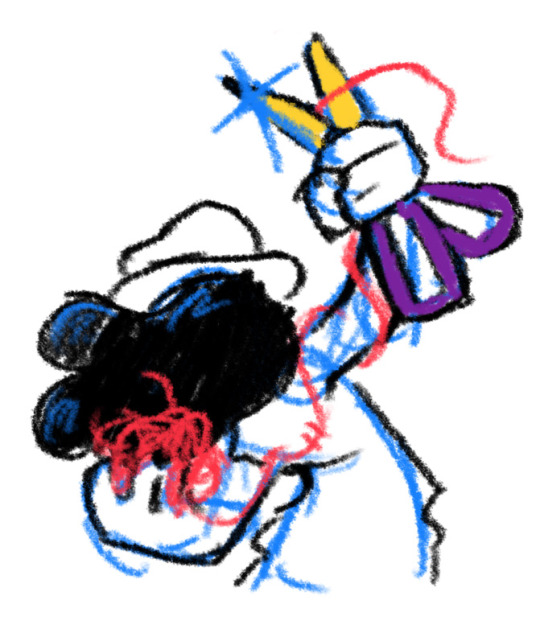
I thought I'd share the sketch of this poster/book cover as well as my initial concepts! You can click the "Read More" button for more in-depth explanations on my design process.
Thhis is all for my latest fanfiction, Snip Snip, so if you'd like to check that out, then...
Now let's crack in!
For the release of "Snip Snip", I actually had several different directions in mind! One was a comic of one of the scenes from the fanfic—specifically the one where the Professor breaks down in front of Kate and Joyce with the line "I don't like being a woman"—and the other was a series of doodles showing the Professor's transition. Unfortunately, both directions met dead ends as I couldn't find the motivation to do either. The most progress I made were these sketches.

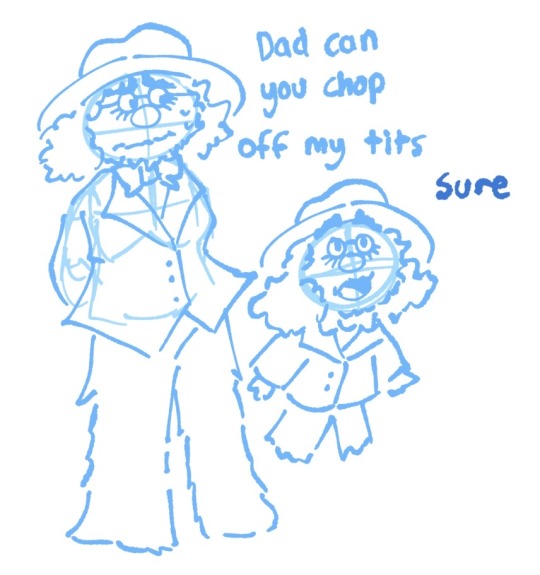
If you're wondering, "The first one looks familiar..." that's because I reused that pose for my first promo art! It was too good of a pose. I couldn't waste it :P
But anyways, after a period of getting extremely frustrated over the lack of progress, I realized my main problem: I was biting off more than I could chew. I didn't know this at the time, but I was dealing with burnout from school assignments that made drawing more ambitious ideas like the ones I had very difficult. Hence, I had to scale it down. It made me think, "Why not do something like a movie poster or a book cover?"
That's how the sketches at the top of the post came to be! I consulted a friend of mine over which pose to choose, and he picked the third one which I understand why so. The obscuring of the Professor's face not only made it cool, but it adds symbolism in how we don't really see his true identity—the real him—until his transition. Here's the first sketch!
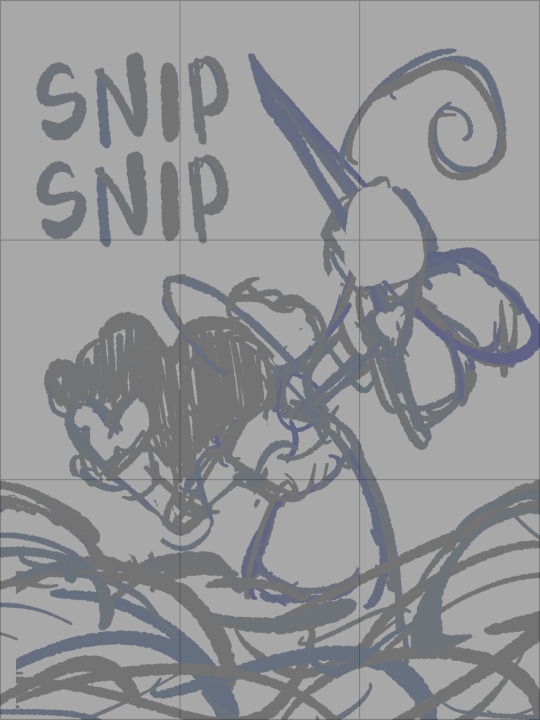
As you can see, the title is on the top left corner! However, I moved it to the bottom for two reasons
It's advice I learnt while looking up how to make movie posters since moving the title to the bottom tends to bring more focus to the illustration above.
I couldn't find a font that fits! And the idea of doing typography again (especially after the Keep Yourself Safe poster...) was really not what I signed up for.
But then it left the problem of the top corner looking empty. It was too distracting! So what did I fill it in with? The subtitle: This is their story. The composition is now more balanced, and also the subtitle tickles me.
As I said before, I looked up movie posters for this! Special thanks to the Nashville Film Institute and Muse by Clio for their articles that guided me during this poster making process. I will say though I got really sidetracked watching Filmmaker IQ's The History of the Hollywood Movie Poster 😭 It's really interesting, I'd recommend watching it!
One thing I learnt is that movie posters limit their colour palettes. Of course, this is good advice for art in general, but movie posters emphasize on its colour usage to attract the audience with their simple yet bold schemes. It is a piece of advertisement after all! Following their footsteps, I limited my colours to the primary colours (red, yellow, blue) and purple to make the scissors pop and allude to the nonbinary flag colour scheme.
And from there, it was just a matter of experimenting with rendering! I wanted a mix of pop art and storybook illustrations, so I mixed lineart with lineless, and I wanted to retain the energy of the sketch while still polishing it, so I cleaned the sketch, merged it with the colours, and painted on top of it rather than make a separate lineart layer.
Overall, I'm extremly proud of the end result! The struggle of figuring out the promo art for this fic has been tormenting me since the beginning of the year, so I'm glad to bring it to an end. Thank you for reading my ramblings! I hope you learnt something or at least had fun? Either way, have a good day!!
#this truly has been a rambles moment#i really really recommend watching that video by the way it is FASCINATING#the professor#shane madej#puppet history#poster design#art process#design process#art#artists on tumblr#sketches#concept art#chris p fried rambles#chris p fried art
8 notes
·
View notes